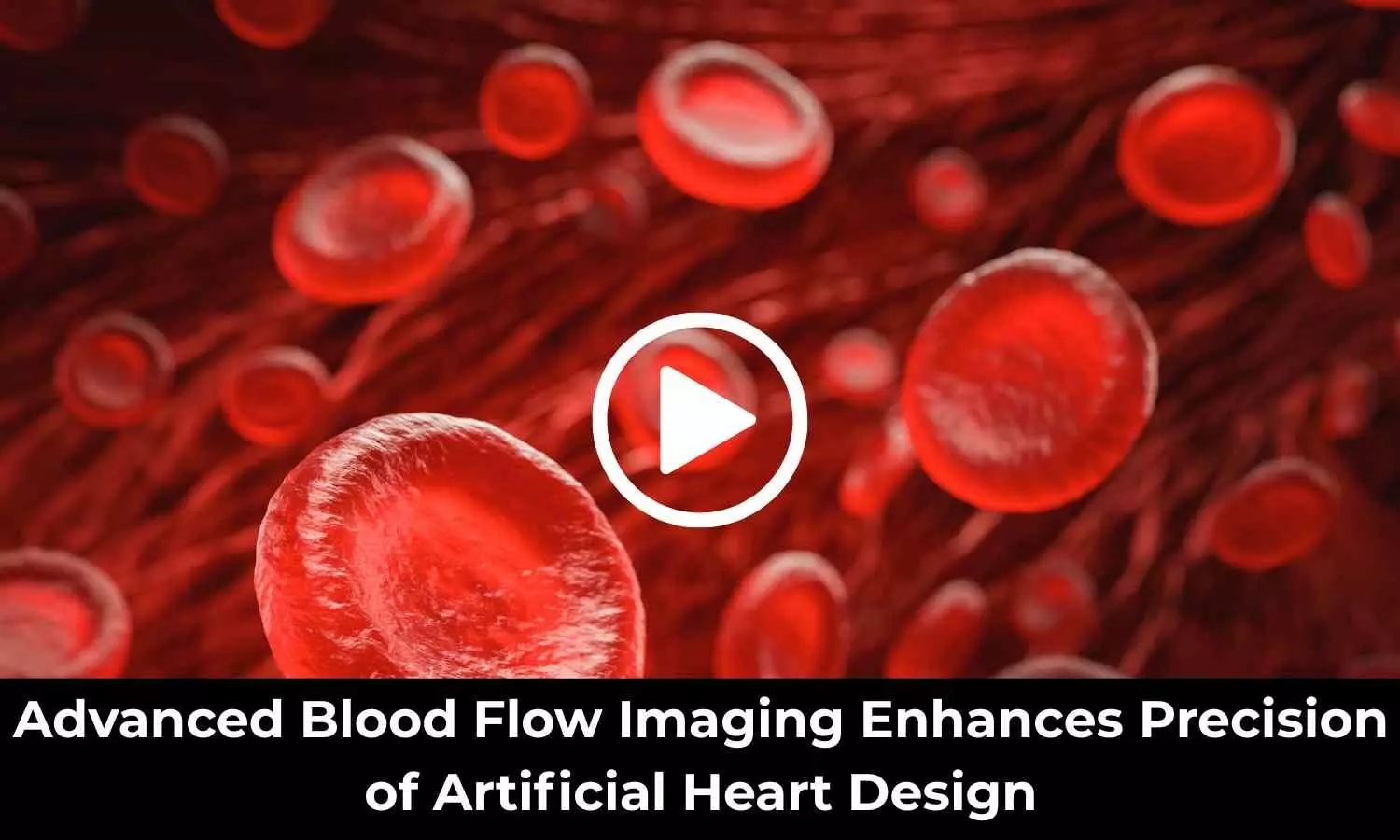Advanced Blood Flow Imaging Enhances Precision of Artificial Heart Design: Study Shows
- byDoctor News Daily Team
- 25 September, 2025
- 0 Comments
- 0 Mins

Using magnetic cameras, researchers at Linkoping University have examined blood flow in an artificial heart in real time. The results make it possible to design the heart in a way to reduce the risk ofblood clotsand red blood cells breakdown, a common problem in today’s artificial hearts. The study, published inScientific Reports,was done in collaboration with the company Scandinavian Real Heart AB, which is developing an artificial heart. Most of the patients whose heart does not work at all are currently connected to a machine that takes care of their blood circulation for them. It is a large device, and the patient is confined to their hospital bed. For those patients, an artificial heart could be an option while waiting for a donor heart. Finding a biologically compatible heart for a transplant can take a long time. In those cases, an artificial heart can enable the patient to wait at home. They may not be running around like Usain Bolt, but patients can be with their loved ones during the waiting period,” says Twan Bakker, PhD student at the Center for Medical Image Science and Visualization, CMIV, at LiU. For this to happen, the technology needs refining. Blood clots and damaged red blood cells are common problems in artificial hearts with pulsating function. This is often due to areas of high and low blood speed being close to each other, or areas where the blood is stationary in the heart. High speed and turbulence can lead to the destruction ofred blood cells, i.e., hemolysis, whereas low speed increases the risk of blood clots. The total artificial hearts connected to an MRI-compatible mock circulatory loop allowed variable physiological conditions (i.e., heart rate 80, 105, 120 bpm) and was scanned with two different velocity encodings. Flow patterns and turbulent kinetic energy were measured with high accuracy in a short measurement time and analyzed. Stasis and viscous energy loss in the artificial heart were found to be similar to healthy native hearts. Elevated turbulent kinetic energy was found in several areas, but values were well below those found in patients with valvular disease. Hence, the authors concluded that using 4D flow MRI in combination with 3D printing can facilitate assessment of flow dynamics in TAHs and enable a rapid iterative design process. Ref:Bakker, T., Najar, A., Finocchiaro, T. et al. 4D flow MRI enhances prototype testing of a total artificial heart. Sci Rep 15, 32533 (2025). https://doi.org/10.1038/s41598-025-18422-y
Disclaimer: This website is designed for healthcare professionals and serves solely for informational purposes.
The content provided should not be interpreted as medical advice, diagnosis, treatment recommendations, prescriptions, or endorsements of specific medical practices. It is not a replacement for professional medical consultation or the expertise of a licensed healthcare provider.
Given the ever-evolving nature of medical science, we strive to keep our information accurate and up to date. However, we do not guarantee the completeness or accuracy of the content.
If you come across any inconsistencies, please reach out to us at
admin@doctornewsdaily.com.
We do not support or endorse medical opinions, treatments, or recommendations that contradict the advice of qualified healthcare professionals.
By using this website, you agree to our
Terms of Use,
Privacy Policy, and
Advertisement Policy.
For further details, please review our
Full Disclaimer.
Recent News
Merck Keytruda wins European Commission nod for lo...
- 30 October, 2025
UP NEET 2025 round 3 allotment results postponed
- 30 October, 2025
Achin Gupta to succeed Umang Vohra as Cipla MD, GC...
- 30 October, 2025
Mumbai shocker: KEM Hospital doctor stabbed by col...
- 30 October, 2025
Daily Newsletter
Get all the top stories from Blogs to keep track.


0 Comments
Post a comment
No comments yet. Be the first to comment!